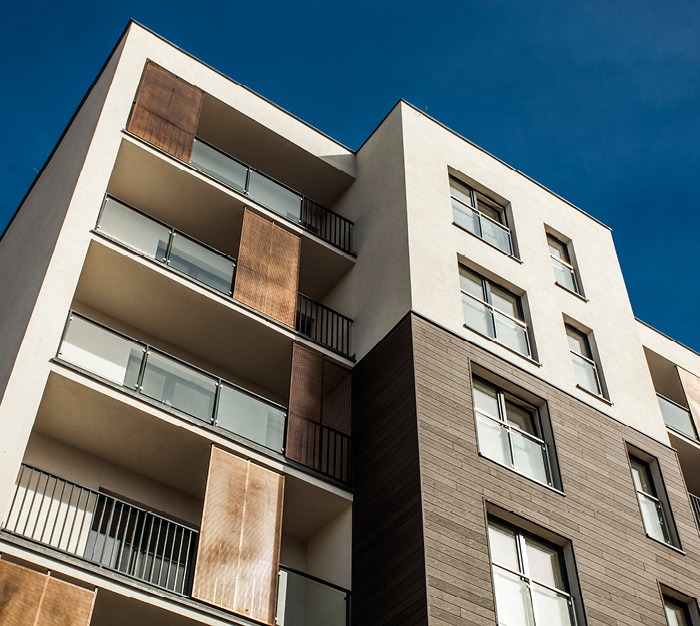Where Do Fire Doors Need to Be Installed
Published: 16th October 2024
Fire doors are a critical part of maintaining safety in residential properties, offering vital protection in the event of a fire. At Hurst, we supply high-quality fds composite fire doors as well as internal fire-rated timber doors, helping to ensure that residential properties meet essential fire safety standards. Designed for applications ranging from new-build projects to reactive maintenance and refurbishment, our fire doors provide the same high level of performance regardless of the setting. This guide outlines where fire doors should be installed in residential buildings and highlights their importance in containing fire and smoke effectively.
Key Locations for Fire Door Installation in Residential Properties
To ensure regulatory compliance and maximise fire safety, it’s important to install fire doors in the correct locations throughout residential properties. Our fds composite fire doors and internal fire-rated timber doors are designed for various residential settings, including multi-storey homes, apartments, and Houses in Multiple Occupation (HMOs).
Between Residential Units and Communal Areas

In multi-occupancy residential buildings, fire doors are crucial for separating individual living units from shared communal areas. This helps to contain the spread of fire and smoke, providing occupants with the time needed to evacuate safely.
- Flat Entrance Doors: Every flat should have a fire-rated door offering at least 30 minutes of fire resistance (FD30). These doors must also be self-closing to ensure they function correctly during a fire.
- Doors Leading to Communal Areas: Fire doors should be installed at entry points to communal areas such as hallways, lobbies, and stairwells, helping to protect residents from fires that may start elsewhere in the building.
At Hurst, our fds composite fire doors and internal fire-rated timber doors meet the fire safety requirements for residential properties, offering reliable protection for occupants and property owners.
Three-Storey or Higher Residential Properties
In homes that are three storeys or higher, fire doors are required to provide essential protection between living areas and key escape routes, such as stairwells.
- Doors Between Living Areas and Stairwells: Fire doors should be installed to separate habitable rooms from stairwells, which act as the main escape route in the event of a fire.
- Converted Lofts and Internal Garages: If a home has a converted loft or an internal garage, fire doors must be installed at the entry points to ensure that these higher-risk areas are properly compartmentalised.
Our FDS composite fire doors and internal fire-rated timber doors are ideal for use in these areas, providing dependable fire resistance in multi-storey residential properties.
Flats and Houses in Multiple Occupation (HMOs)

HMOs, as well as blocks of flats, have specific fire safety requirements that include the installation of fire doors in key locations to ensure the safety of all residents:
- Communal Areas: Fire doors are required at the entrances to communal spaces such as kitchens, lounges, and corridors to contain any potential fires within these areas.
- Flats Above Ground Level: Flats located 4.5 metres or more above ground level must have fire doors installed to separate habitable rooms from escape routes, ensuring safe evacuation for residents.
By supplying certified fds composite fire doors and internal timber fire doors for HMOs and flats, Hurst helps ensure that these buildings meet the necessary fire safety standards.
Fire Door Identification and Traceability
Fire doorsets provided by Hurst can be identified by a label located on the top edge of the door, which details the manufacturer’s name, a unique identification number, and the production date. Additionally, coloured plugs are installed on the hinge side of the door for easy identification. A yellow plug signifies that the door offers a minimum of 30 minutes of fire integrity. These plugs also display a coloured tree symbol, indicating specific features:
- Orange tree – Approved factory fitted glazing supplied.
- Silver tree – A complete certified factory hung fire doorset.
Each plug also includes Hurst’s unique certification number, ensuring traceability of the doorset from the point of manufacture throughout its lifespan. Importantly, these plugs must remain intact and should not be removed during installation or adjustment to preserve the certification and integrity of the product.
Fire Door Compliance and Best Practices
At Hurst, we supply fds composite fire doors and internal fire-rated timber doors that have been rigorously tested and meet the FD30s standard, offering at least 30 minutes of fire resistance. These doors play a key role in safeguarding residents, helping to control the spread of fire and smoke and providing crucial time for safe evacuation.
To ensure compliance with fire safety regulations, it’s important that fire doors should be installed by qualified professionals and are regularly inspected to ensure their continued effectiveness.
While we specialise in the supply of fire doors, our team can provide expert advice and technical expertise on selecting the most appropriate fire door solutions for your residential projects, helping you to meet both safety and regulatory requirements. Contact us to find out more.

